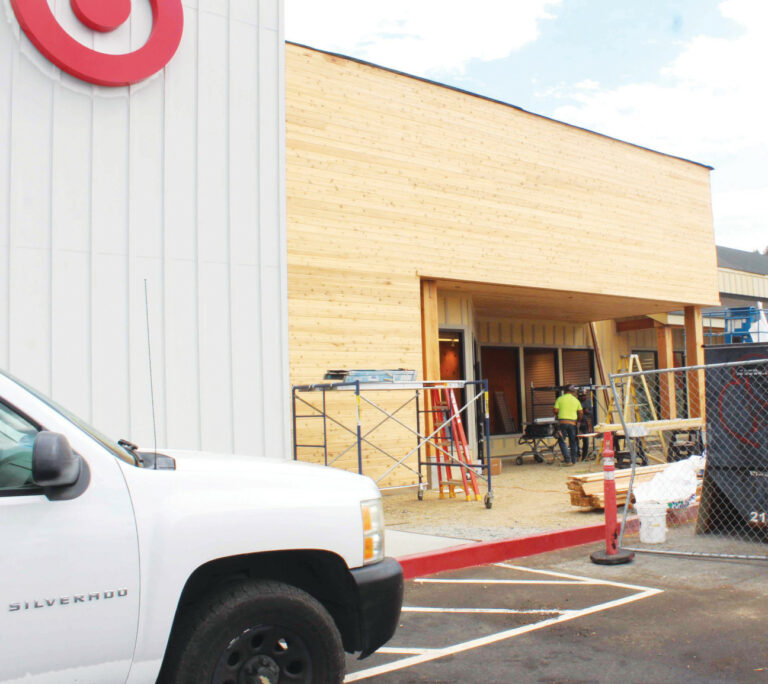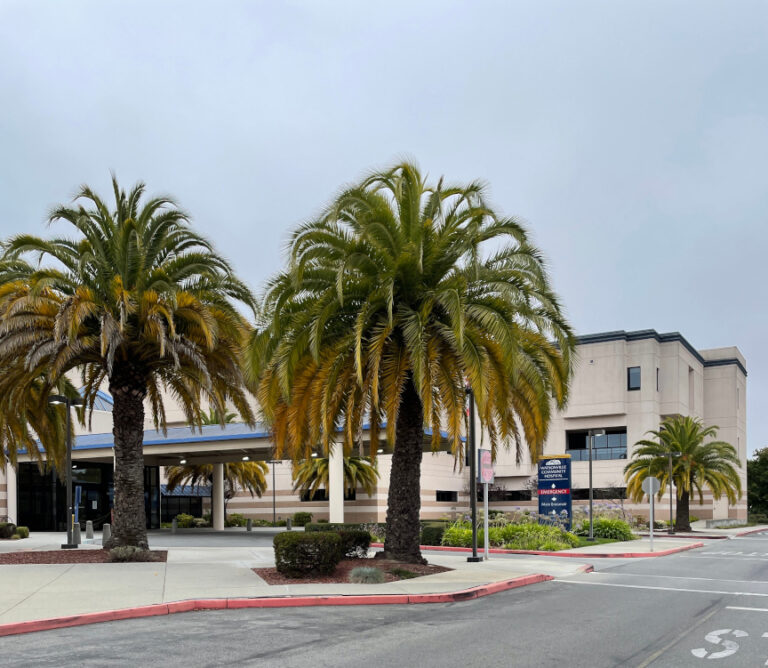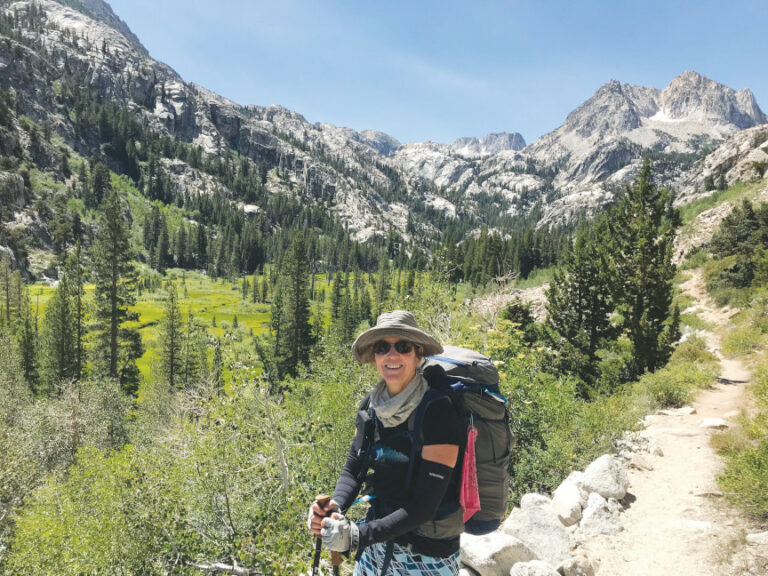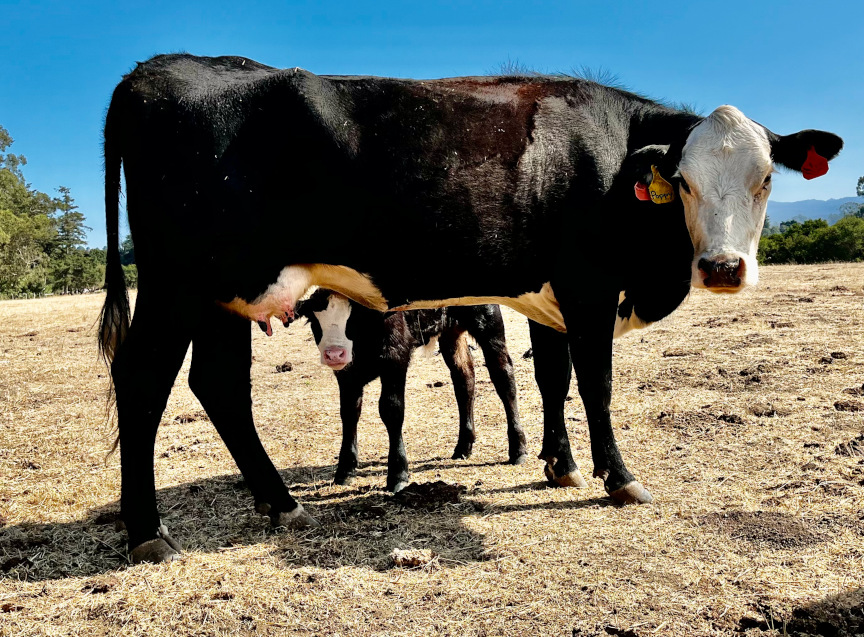The Santa Cruz City Council moved forward with plans to close the Benchlands encampment near San Lorenzo Park, approving a $1 million budget to support the four-month, phased closure.
The Benchlands’ closure is estimated to cost the city $952,700, which includes transportation to shelters, trash pickup and the opening of additional shelters, among other expenses. The closure was originally scheduled for July, but because of various factors, was postponed until the end of summer.
At Tuesday’s council meeting, Deputy City Manager Lisa Murphy detailed the ways the current situation is a threat to the environment, public safety, health and welfare. Murphy said the trash debris and drug use have wreaked havoc on the local habitat, and neighboring community members report feeling unsafe.
Not to mention, maintaining the camp is expensive: the city spends around $66,000 a month to upkeep the sanctioned encampment, an estimate that does not include staff time. The city pays for portable toilets, wash stations, trash pickup, running water and other expenses.
Starting this month, the city will begin the first of four phases in an effort to close the encampment and move people into shelters.
The first phase, which is already underway, will include fencing and closing the upper portion of the park, which will remain closed throughout the closure. In the second phase, the city will section off portions of the Benchlands and begin moving people out. The city will provide transportation to shelters and storage facilities for those interested in shelter options. The city is still in the midst of making these transitions accessible for those with disabilities.
This second phase will begin sometime in September, the city hopes, but that phase is contingent on the National Guard Armory, which will be managed by the Salvation Army and cost the city $1.7 million, getting up and running.
That’s because at the heart of this plan is a promise that the city says it intends to keep: to have enough shelter space to offer to everyone who wants it, before moving people out of the encampment.
Currently, the city’s transitional camps are full. The shelter at 1220 River St. is at capacity, serving 30 participants. The City’s National Guard Armory Overlook, which was propped up in May and offers 75 spaces for tents, has been at full enrollment since June. The inside of the Armory will provide another 60 spaces for those interested.
City leaders were frank about shelter limitations.
“We have to acknowledge that there’s not enough shelter in this community,” said Murphy.
Although the city plans on augmenting shelter space by handing out shelter vouchers for other communities and hotel and motel vouchers that the county will fund, there are limitations, she said. And when the city hits those limitations, the Benchlands closure will pause until more shelter is available.
Just earlier this month on Aug. 5, the County released its biannual Point-in-Time Count report, which gives a “conservative estimate” of the number of people and households experiencing homelessness. Between 2019 and 2022, there was a 6% increase in people experiencing homelessness (2,167 to 2,299 people). The city estimates 225 people are living in the encampment.
The council approved the $1 million, which came from a one-time $14 million allocation from the state, to support the closure in a 6-1 vote, with Councilmember Sandy Brown dissenting.
Brown cited concerns that closing this encampment will simply move the issue to another location—a concern that some callers reiterated.
That discussion occurred in the afternoon session of Tuesday’s meeting. At the start of the evening session, more people addressed the council during public comment about the situation at the Benchlands. As the councilmembers were beginning to ask city staff questions about the resources available to people experiencing homelessness, several people began shouting at the elected officials saying that there none being made available.
“This is a bunch of nonsense,” one person said.
“You are killing people,” another person said.
Those people were escorted out by Santa Cruz Police Department officers as the council vacated the chambers for a recess.
In other actions, the council received a report on the SCPD from an independent police auditor, which suggested:
- Strengthening the Department’s accountability systems
- Shortening investigation timeframes to ensure investigations are completed on time
- Develop training for officers, supervisors and dispatchers to prevent bias by proxy, which occurs when a person calls the police to report false or ill-informed claims about a person they dislike or have a bias against
Some callers said that because the SCPD can choose whether or not to implement these recommendations, the audit was rendered useless.

























